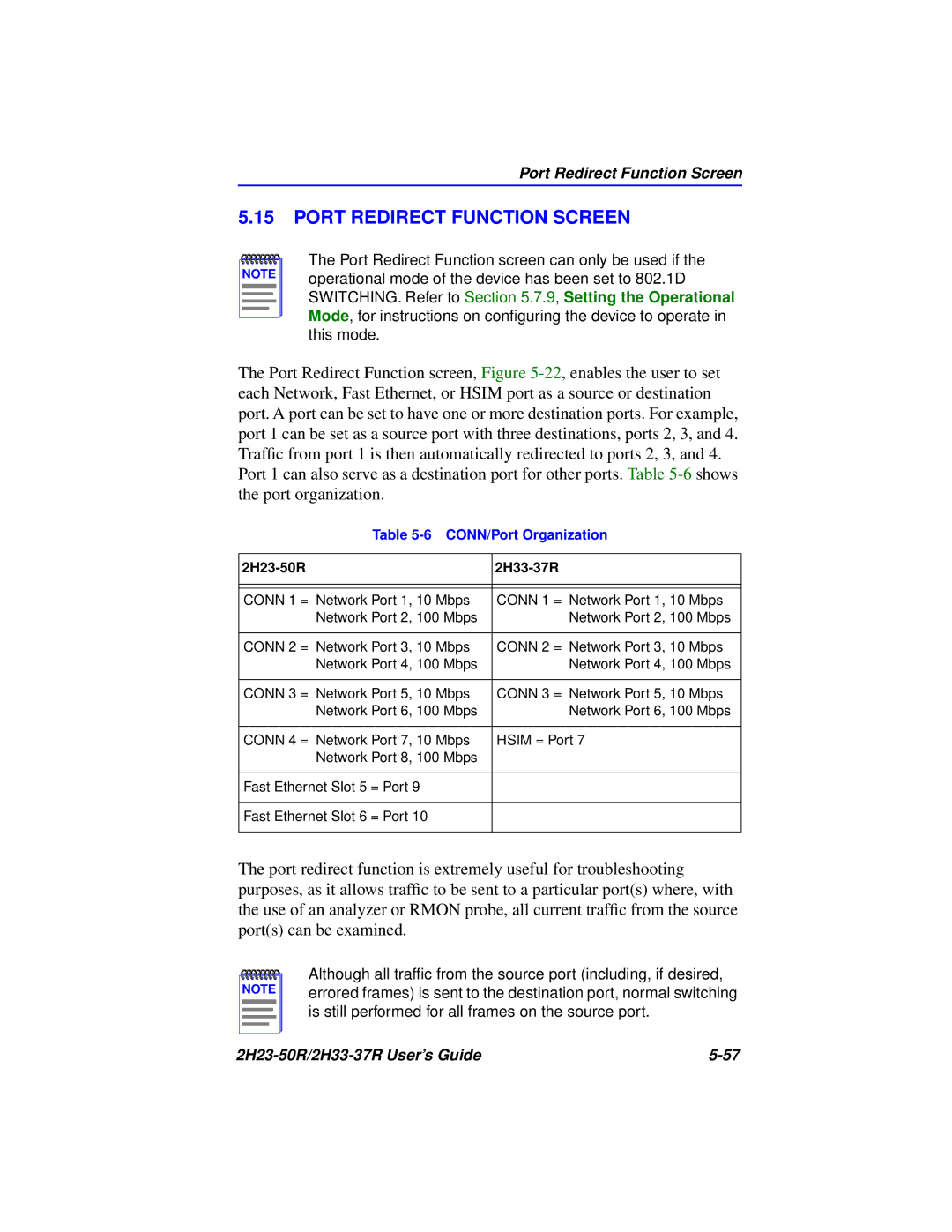
Port Redirect Function Screen
5.15PORT REDIRECT FUNCTION SCREEN
NOTE |
The Port Redirect Function screen can only be used if the operational mode of the device has been set to 802.1D SWITCHING. Refer to Section 5.7.9, Setting the Operational Mode, for instructions on configuring the device to operate in this mode.
The Port Redirect Function screen, Figure
Table 5-6 CONN/Port Organization
|
|
| |
|
|
|
|
|
|
|
|
CONN 1 = Network Port 1, | 10 Mbps | CONN 1 = Network Port 1, | 10 Mbps |
Network Port 2, | 100 Mbps | Network Port 2, | 100 Mbps |
|
|
|
|
CONN 2 = Network Port 3, | 10 Mbps | CONN 2 = Network Port 3, | 10 Mbps |
Network Port 4, | 100 Mbps | Network Port 4, | 100 Mbps |
|
|
|
|
CONN 3 = Network Port 5, | 10 Mbps | CONN 3 = Network Port 5, | 10 Mbps |
Network Port 6, | 100 Mbps | Network Port 6, | 100 Mbps |
|
|
|
|
CONN 4 = Network Port 7, | 10 Mbps | HSIM = Port 7 |
|
Network Port 8, | 100 Mbps |
|
|
|
|
| |
Fast Ethernet Slot 5 = Port 9 |
|
| |
|
|
| |
Fast Ethernet Slot 6 = Port 10 |
|
| |
|
|
|
|
The port redirect function is extremely useful for troubleshooting purposes, as it allows traffic to be sent to a particular port(s) where, with the use of an analyzer or RMON probe, all current traffic from the source port(s) can be examined.
NOTE |
Although all traffic from the source port (including, if desired, errored frames) is sent to the destination port, normal switching is still performed for all frames on the source port.
|
